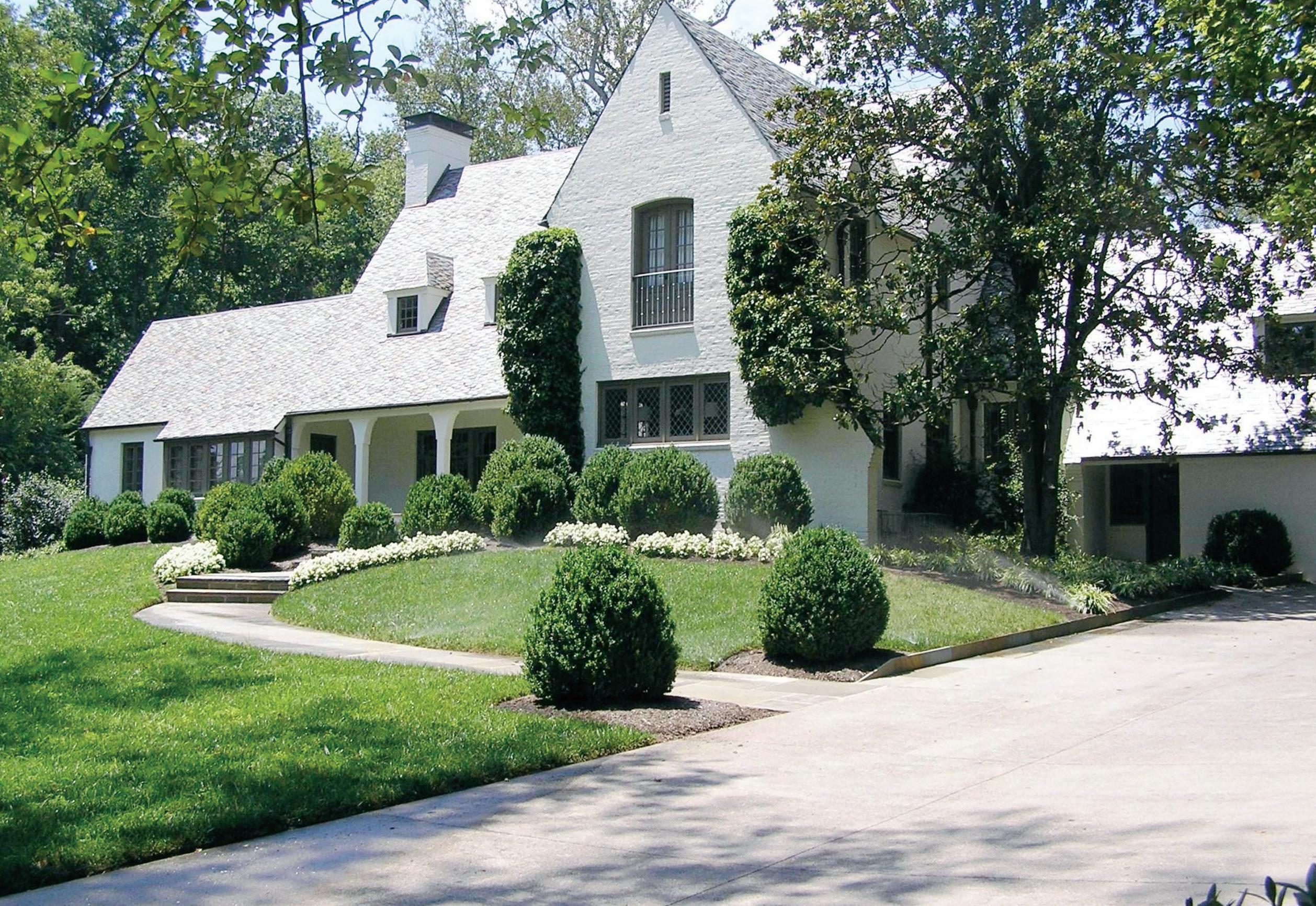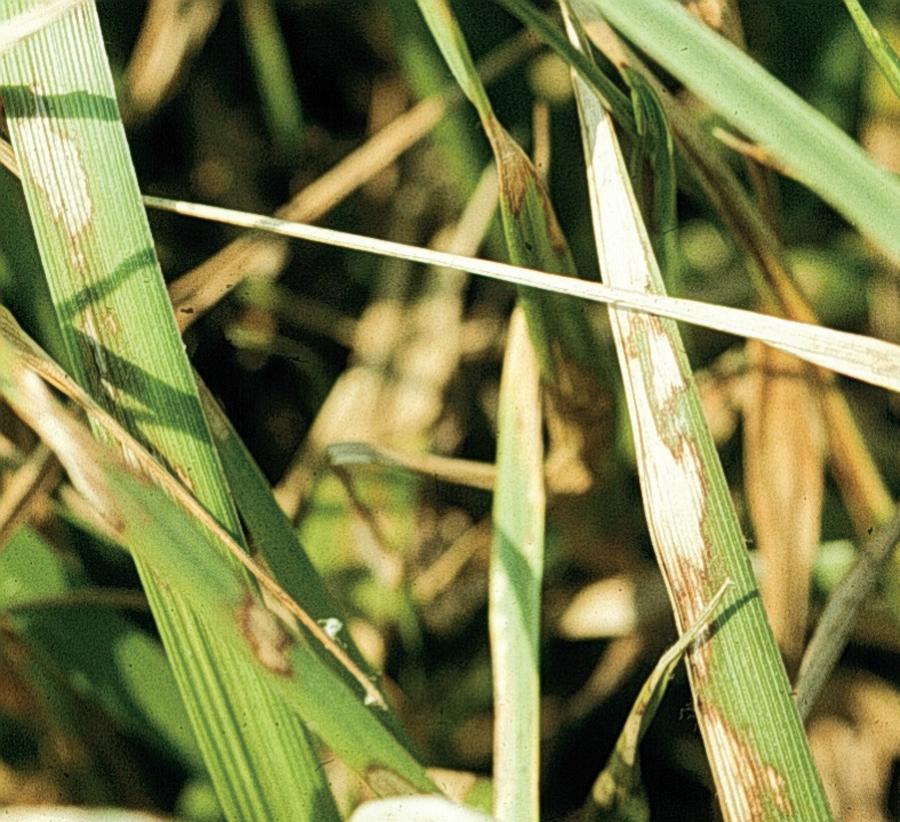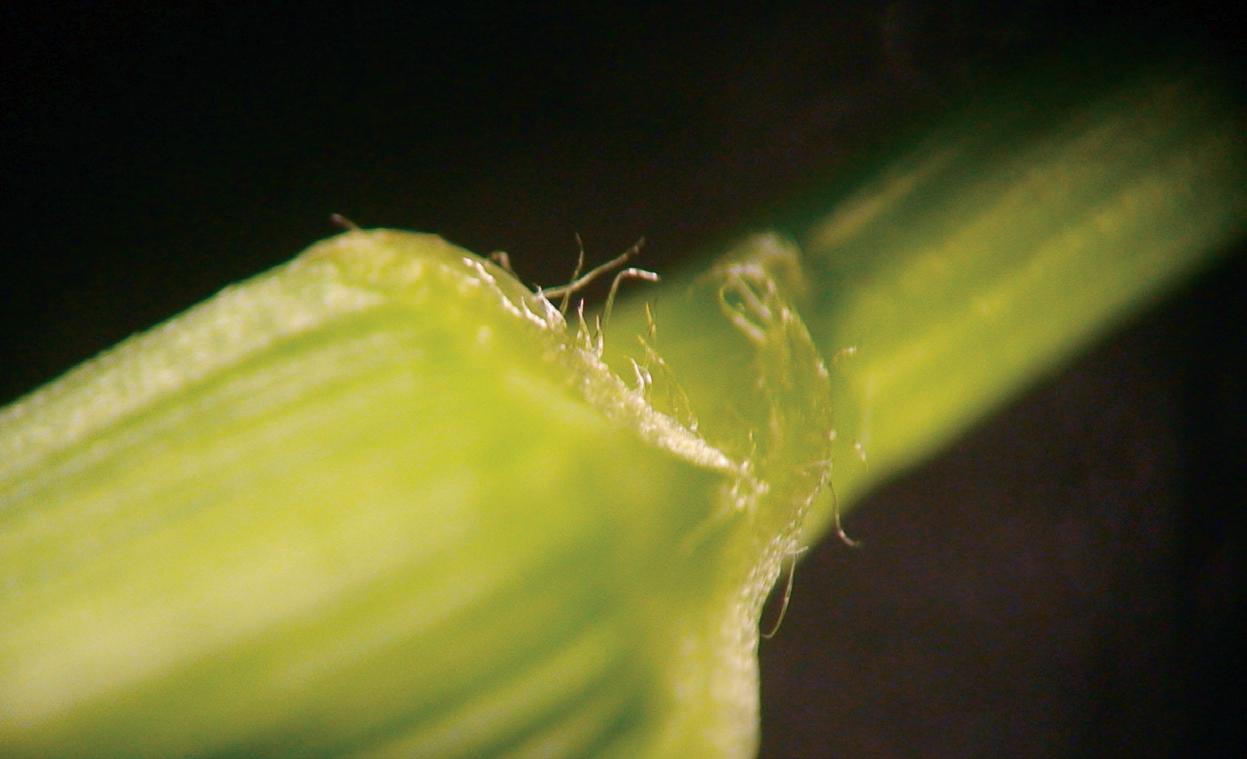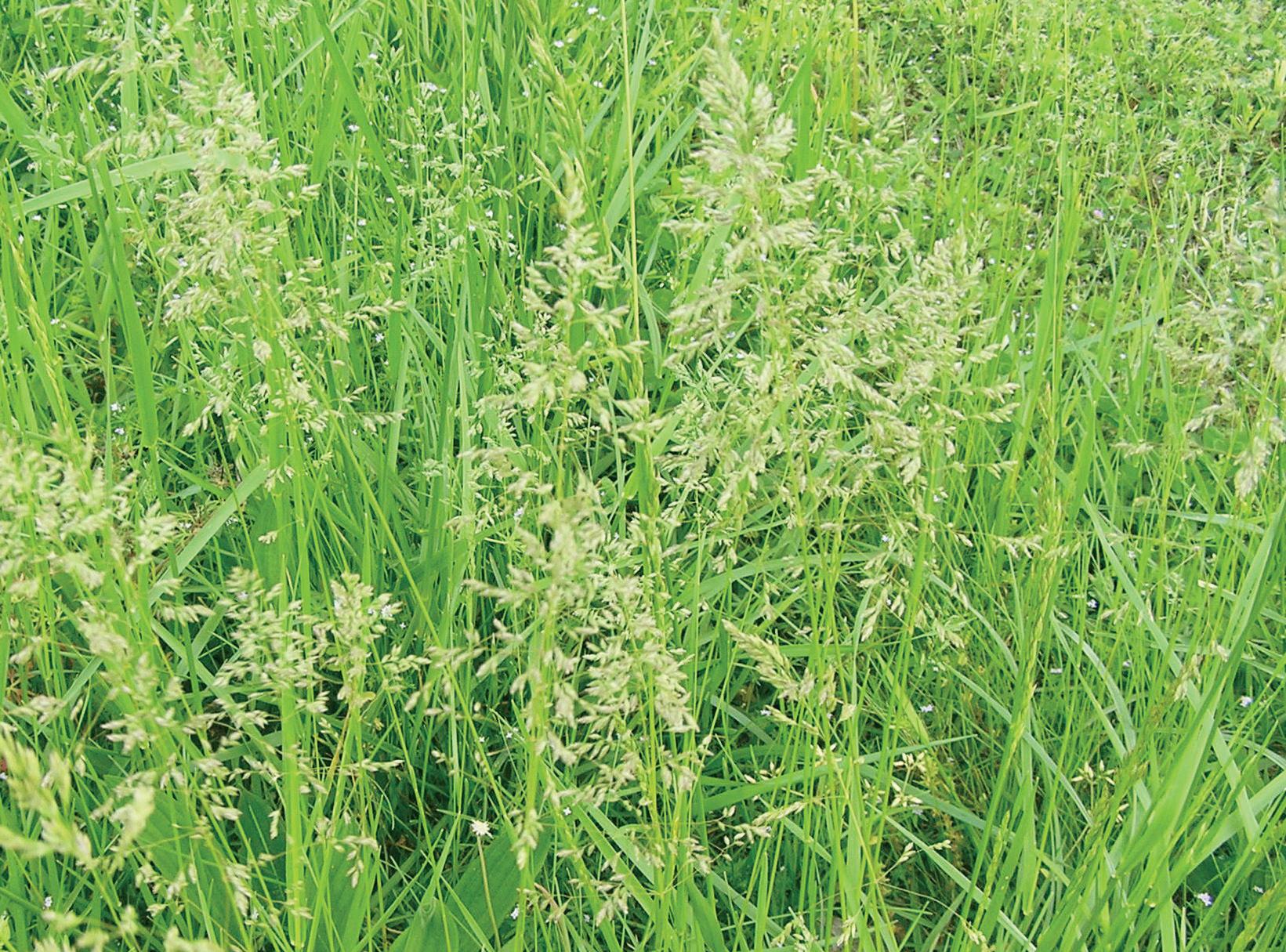
19 minute read
The Fescues: An Update
By Tom Samples, Ph.D. and John Sorochan, Ph.D., University of Tennessee, Department of Plant Sciences
There are more than one-hundred species of fescues worldwide. Some are annuals while others are perennials. Annual species are usually considered weeds. Six perennial fescues are managed either alone or in turf mixtures in the U. S. Presently, tall fescue (Festuca arundinacea Schreb.), classified as a coarse fescue, is the primary cool-season species used as turf in Tennessee. Strong (Festuca rubra L. rubra) and slender creeping red (Festuca rubra L. ssp. trichophylla, Festuca rubra var. littoralis Vasey), chewings (Festuca rubra L. ssp. falax Thuill., Festuca rubra L. var. commutata Gaud.), hard (Festuca brevipila R. Tracey) and sheep (Festuca ovina L.) fescues are collectively referred to as fineleaf or fine fescues due to their narrow leaves. Because they generally perform better than tall fescue in low light, the fine fescues are commonly recommended for use as cool-season turfs in medium to moderate shade in northwest, north central and upper east Tennessee. A lack of heat tolerance limits the use of these species in shade in other areas of the state in which summer temperatures are much higher. They are also valued for their fibrous root systems when used as components of ‘meadow mixes’ along with legumes, wildflowers and/or native plants. Left unmowed, fine fescues often reach a height of 6–12 or more inches. Seeds of many improved, turf-type coarse and fine fescues contain beneficial fungi, or endophytes, that live between cells inside plants. Endophytes may improve the plants’ ability to withstand heat stress and enhance disease resistance (for example, dollar spot (Lanzia and Moellerodiscus spp.) in fine fescues). They also produce compounds capable of reducing the feeding activity of certain insect pests. Endophytes are transmitted from generation to generation in seed, and do not move from one plant to another by way of pollen.
Advertisement
Tall Fescue
Tall fescue is adapted throughout much of the continental U.S. except in non-irrigated arid regions, the Southern Coastal Plain and northern-most zones in northern tier states where plants are routinely severely damaged or killed by extreme low temperatures. Although the date at which tall fescue, a native of Europe and North Africa, was first introduced into the U.S. is unknown, the species was evaluated in several North American forage trials in the late 1800’s. ‘KY-31’, a cultivar found growing in a pasture on the farm of W.M. Suiter in the mountains of eastern KY and known to have been there before 1890, is still marketed for use as forage, roadside groundcover and utility and residential turfs. After lengthy testing begun by Dr. E. N. Fergus of the University of Kentucky who first visited the pasture in 1931, KY-31 was released into the marketplace in the early 1940’s.

Irrigating a Residential Tall Fescue Lawn
Establishment and Management
The germination and purity of tall fescue seed should be at least 85 and 95 percent, respectively. Depending on cultivar and production year, there are usually about 230,000 or more tall fescue seeds per pound. The recommended seeding rate of tall fescue ranges from 5–8 pounds per 1,000 square feet. The lower rate is recommended when seed is ‘fresh’, and the quality and germination percentages are high, for example >90 and >95, respectively. Depending on soil moisture and temperature, tall fescue seeds may require from seven to 14 or more days to germinate. Turftype tall fescue turfs generally perform well at a cutting height from 2–3 inches, while the recommended cutting height of KY31 is usually slightly higher (for example, 2½–3½ inches). Lower cutting heights are more likely to allow weed infestations than taller cutting heights. The species often requires a medium level of N compared to other cool-season turfgrasses. For example, depending on cultivar and the level of care, tall fescue turfs often require from <0.4-1 pound N/1,000 sq. ft. per growing month. Tall fescue plants are adapted to medium- and fine-textured soils with a pH range from 5.0 to 9.0, although a pH from 6.0 to 6.5 is preferred. Although they typically have a greater evapotranspiration (ET) rate compared to several other cool-season turfgrasses, tall fescues are generally capable of surviving extended periods of drought. The maximum daily water use or ET rate of tall fescue is estimated to be >0.39 inch. However, ET can range dramatically among cultivars. A high root length density in the deeper root zone and the ability to maintain ET as soils dry are two factors important for this drought resistance. Improved, turf-type tall fescue cultivars may accumulate thatch much faster than older, forage-type varieties including KY-31 and ‘Alta’. Dethatching is recommended when the thatch layer reaches ½ inch. Turfs growing in compacted and/or clayey soils often benefit from core aerification (coring). Coring in late summer or early fall before broadcasting seed usually improves seed contact with soil. Rhizoctonia blight (brown patch), a very common disease of tall fescue turfs, causes most damage during warm, humid or wet weather.

Large Brown Patch Lesions
Photo credit: Dr. Alan Windham
Activity of the responsible fungal pathogen Rhizoctonia solani may result in blighting of large areas of turf. Gray leaf spot, caused by the fungus Pyricularia grisea and dollar spot are also common fungal diseases of tall fescue. Pythium blight (Pythium spp.) may develop when night temperatures exceed 65°F and leaves remain wet for 12 to 14 hours for several consecutive nights. A number of insects also cause damage in tall fescue turfs in Tennessee including white grubs (larvae of several species of scarab beetles), armyworm (Pseudaletia unipuncta), fall armyworm (Spodoptera frugiperda) and sod webworm (larvae of grass moths, Crambinae spp.). Common weeds of tall fescue turfs can be broadleaves, grasses, sedges or rushes. They may have either an annual, biennial or perennial life cycle. Most broadleaf weeds have wide leaves that are produced in pairs or multiples. The leaves are often suspended above the main stem by a petiole and leaf veins form a net-like pattern. The leaf of a broadleaf weed may have one (for example, dandelion, Taraxacum officinale) or multiple leaflets (for example, white clover, Trifolium repens). Although stems of grassy weeds may be round (for example, green foxtail, Setaria viridis and giant foxtail, Setaria faberii) or flat (for example, smooth crabgrass, Digitaria ischaemum and goosegrass, Eleusine indica), leaves are usually blade-like with veins running parallel from base to tip. Unlike grasses, sedges (for example, yellow nutsedge, Cyperus esculentus and purple nutsedge, Cyperus rotundus) have triangular stems and leaves are arranged in three vertical rows. Rushes are members of the Juncus genus, while wood rushes are members of the Luzula genus. There are about 300 species of rushes and about 80 species of wood rushes, and depending on species, plants have either hollow or pithy stems. One such species, path rush (Juncus tenuis), also referred to as poverty rush, is native to both the U.S. and Canada, and is very well adapted in both sun and shade, and wet soils.
Identification
Although a percentage of plants of several varieties produce short rhizomes, tall fescue has a bunch-type growth habit. The collar of a tall fescue plant is divided and broad, and has short hairs, and leaf blades are usually flat, ridged, from 5 to 10 millimeters wide and have rough edges.

Tall Fescue Auricles

Tall Fescue Leaf Blade Upper Side

Tall Fescue Inflorescence
Cultivar Testing
Origin of the development of turf-type cultivars can be traced to plants from well-established turfs in a germplasm collection begun in 1962 by C. Reed Funk at Rutgers University in NJ. ‘Rebel’, the first improved, turf-type tall fescue marketed in the U.S., was selected for release in 1981 on the basis of attractiveness, persistence, disease resistance and overall performance in turf trials.

NTEP Tall Fescue Trial
National Turfgrass Evaluation Program (NTEP). A primary mission of NTEP is to develop and coordinate uniform evaluation trials of cultivars and promising selections of several turfgrass species including the fescues in both the U. S. and Canada. Test results are used by seed companies, retailers and turfgrass breeders to investigate the general adaptation and performance of individual, experimental or named cultivars. Results also help determine if a particular cultivar is well adapted to a local area or specific management intensity level.
The first NTEP Tall Fescue Test was planted in 1983. A total of 30 entries were evaluated in 19 states (CA, CO, GA, ID, KS, KY, MD, MA, MO, MS, NE, NJ, NY, NC, OR, RI, TX, VA and WA). Plots in a trial in Lincoln, NE were maintained at a high level of intensity while those in a second trial were maintained at a low level of intensity. In order to compare cultivar performance in Dallas, TX with and without supplemental irrigation, the tall fescues were established in both irrigated and non-irrigated plots receiving full sun. Cultivars in a third trial in Dallas were planted in shade and received no supplemental irrigation. Green industry professionals and Tennessee homeowners may remember purchasing seed of one or more of the early improved, turf-type cultivars evaluated in this test including ‘Apache’, ‘Arid’, ‘Barcel’, ‘Bonanza’, ‘Chesapeake’, ‘Falcon’, ‘Finelawn 1’, ‘Jaguar’, ‘Houndog’, ‘Maverick’, ‘Mustang’, Rebel and ‘Tempo’.
More NTEP Tall Fescue Tests followed: 1987 w/ 65 cultivars in 23 states and Washington D.C. (Final Report NTEP No. 92- 11); 1992 w/ 79 cultivars in 27 states, Washington D.C., British Columbia and Saskatchewan (Final Report NTEP No. 96-13); 1996 w/ 129 cultivars in 24 states (Final Report NTEP No. 01- 14); 2001 w/ 159 cultivars in 24 states (Final Report NTEP No. 06-12); 2006 w/ 113 cultivars in 25 states (Final Report NTEP No. 12-10); and 2012 w/ 116 cultivars in 21 states (Final Report NTEP No. 18-13). Each of the reports listed above are available online at https://www.ntep.org/ntep/.
Research results indicate that color, leaf width, stand density, uniformity, seedling vigor, plant height, drought, heat and shade tolerance, disease and insect resistance, and rhizome production and length vary among cultivars. The cultivar ‘Grande,’ developed from germplasm originally selected for improved color, texture, stand density and brown patch resistance, was capable of producing measurable rhizomes within 12 weeks after planting. ‘Labarinth’ was the first cultivar registered as an RTF ™ , or rhizomatous tall fescue (RTF is a registered trademark of Barenbrug, Tangent, OR).
Alliance for Low Input Sustainable Turf ® (A-LIST ™ ). The A-LIST ™ is a non-profit, university and industry cooperative formed to help turfgrass managers and influence turfgrass breeding by developing trial guidelines and evaluation protocols that result in the identification of best performing turfgrass cultivars under reduced inputs (for example, water, fertilizer, fungicides and insecticides) and management. Presently, cooperators include Rutgers University, the University of Connecticut, Purdue University, the University of California- Riverside, Utah State University, Michigan State University, North Carolina State University and the University of Wisconsin. In order to be an “A-LIST ™ Approved Variety” the variety must have demonstrated superior performance in A-LIST ™ based on three criteria. 1. The cultivar is in the top least significant difference (LSD) group for drought tolerance as measured by percent green cover for each of two years in at least two locations. 2. The cultivar has provided acceptable or better turf quality for each of the two years in at least two trial locations. 3. The cultivar is an entry in an NTEP trial for the species. A variety recognized as ‘promising’ has done well for both drought tolerance and turf quality in the first year of trial by meeting all of the standards for approval in at least two locations as required for full approval, however, two years of field data is lacking. A-LIST ™ approved seed blends must have 1) at least 65% approved varieties; 2) No forage varieties, ‘variety not stated’ material or uncertified, common varieties; and 3) an A-LIST ™ approved seed tag. More information regarding specific A-LIST ™ approved tall fescues is available online at http://a-listturf.org/. In 2019, thirteen tall fescues were listed as A-LIST ™ cultivars, and four received tentative approval based on NTEP and other trials, and will be entered into the next series of A-LIST ™ trials.
Fine Fescues
Fine fescue shade mixtures contain seed of two or more species. Fine fescue seed mixtures are often planted along tree-lined highways where maintenance levels are low and turfs are infrequently mowed at a height of 3 or more inches. Seed of fine fescues is also commonly mixed with seed of improved, turf-type tall fescues or Kentucky bluegrasses to improve overall turf performance in shade.

Fine Fescues in Shade Along Roadside Montgomery Bell State Park

Fine Fescue Inflorescence
Chewings Fescue
Chewings fescue, a light-to-medium green bunch-type species, is indigenous to cool, forested areas of Europe where it is valued as a cold- and shade-tolerant cool-season turfgrass. The species was first extensively cultivated in New Zealand. Plants are often deeply rooted and form a denser, more upright turf compared to strong creeping fescue. A lack of stolons and rhizomes contributes to the poor traffic tolerance and recuperative ability of the species. Although tolerant of drought, chewings fescue is often dormant during hot, dry summer months. Plants are prone to disease during hot, wet weather and may quickly produce thatch. In Tennessee, chewings fescue is not generally as persistent or as strong as creeping fescue and hard fescue. Plants grows best in slightly acidic, infertile and well-drained soils. The cultivar ‘Cascade,’ one of the oldest cultivars, was developed by mixing seed lots from 12 sites in OR, was released in 1966 by the Oregon Agricultural Experiment Station (AES).
Hard Fescue
Hard fescue, a non-creeping, cool-season turfgrass species from Europe, has been used for many years to stabilize disturbed soils in the Pacific Northwest. It is one of the ‘toughest’ of the fine fescue species. Plants resemble sheep fescue however, leaves are usually firmer, grayish-green and wider. Although shallowrooted and less tolerant of drought compared to several other fescues including sheep fescue, the species has a high shoot density, excellent salt tolerance and is generally more tolerant of drought than strong and slender creeping red fescues. Due in part to the high level of heat tolerance compared to that of other fescues, the species often remains green throughout summer months. The rate of establishment of hard fescue from seed is often slower than that of chewings, and strong and slender creeping red fescues. One of the early cultivars, ‘Durar’ was released cooperatively by the Idaho, Oregon and Washington AES and the Soil Conservation Service in 1949.

Hard Fescue Leaf Sheath

Hard Fescue Seed Production Field, Willamette Valley, OR
Slender Creeping Red Fescue
Slender creeping fescue is native to Europe, where it is found growing in pastures and lawns, and on undisturbed, shady sites. Plants have hair-like leaves and spread by small, short rhizomes. Slender creeping red fescue is well adapted to dry, well-drained, infertile soils, and tolerates close mowing. As the name of the species implies, slender creeping red fescue has much finer rhizomes than strong creeping red fescue. The species, like strong creeping red fescue, does not tolerate routinely saturated or poorly drained soils.
Strong Creeping Red Fescue
This species, also referred to as creeping red fescue, is native to Europe. Plants have thick, long and vigorous rhizomes and, when maintained in an appropriate location, form a fine-textured, drought tolerant sod. Strong creeping red fescue is valued for its shade tolerance and low maintenance requirement, and is usually more tolerant of high- and low-temperature extremes than chewings fescue. ‘Golfrood’, an early cultivar selected for its distinct light-green color, very fine leaf blade width, high aerial shoot density, improved low-temperature color retention and good salt tolerance was released by D. J. van der Have of the Netherlands in 1940. The cultivar was, however, susceptible to disease (for example, dollar spot and red thread [Laetisaria fuciformis]).

Strong Creeping Red Fescue Ligule
Sheep Fescue
This bunch-type species indigenous to the Northern Hemisphere has very stiff, upright leaves and once established, requires very little maintenance. Sheep fescue tolerates low temperatures and grows well in infertile, acidic, sandy or gravelly soils. Sheep fescue is not well adapted on sites with a high water table. The species also performs poorly where routine flooding occurs. Sheep fescue is planted for soil reclamation and erosion control where plants are not mowed or are maintained at a cutting height of 6 inches or higher. Some cultivars including ‘Bighorn’, developed from plants selected from old turfs in NJ and released by Turf-Seed Inc., ‘SR3000’, developed cooperatively by Seed Research of Oregon and the New Jersey AES and released in 1987, and ‘MX-86’ developed by Jacklin Seed Company and released in 1989 are bred for use as low-input, coolseason turfs.
Establishment and Management
Fine fescues are not produced as sod in TN. The minimum acceptable germination and purity of fine fescue seed is 80 and 95 percent, respectively. The seed count per pound varies among species. There are an estimated 615,000 strong creeping red fescue seeds per pound, 615,000 chewings fescue seeds per pound, 550,000 hard fescue seeds per pound and 530,000 sheep fescue seeds per pound. The recommended seeding rate ranges from 3–5 pounds per 1,000 sq. ft. depending on the intended use of the species, and the seed germination and purity of the seed lot. When weather favors plant growth, the optimum cutting height ranges from 1–2 inches. Increasing the cutting height by ½ inch prior to hot, dry conditions in summer may help reduce heat and drought stress. The quality of fine fescue turfs most often rapidly declines if too much N is applied. Fine fescues generally require one-half or less N than Kentucky bluegrass. Depending on cultivar, shade level and maintenance intensity, a fertilization rate as low as 1 pound N per 1,000 sq. ft. annually is often sufficient in TN. The maximum evapotranspiration rate of fine fescues ranges from an estimated 0.28–0.33 inch per day, and is classified as moderate, much lower than that of tall fescue. The thatching tendency of fine fescues is usually greater than that of tall fescue, and traffic tolerance is limited, especially in shade. Fine fescue turf may require periodic dethatching and core aerification. The species are susceptible to several fungal diseases including dollar spot, powdery mildew (Erysiphe graminis), red thread and pythium blight (Pythium spp.). Since direct sunlight inhibits growth of the powdery mildew fungus, turfs maintained in dense shade and exposed to high humidity are prone to infection. Generally, insect pests of tall fescue also have the potential to damage fine fescues. In addition to mosses, which are members of the phylum Bryophyta and have no vascular system, ground ivy (Glechoma hederaceae), wild violet (Viola spp.) and nimblewill (Muhlenbergia shreberi) are prime examples of perennial, shadetolerant weeds.
Identification
Because they so closely resemble one another in plant form and structure, or morphological features, fine fescue species can be very difficult to distinguish or classify visually. One laboratory method helpful to turfgrass breeders is laser flow cytometry, where plant cells are suspended in liquid and passed through a laser beam, often after applying a fluorescent stain. Characteristics of the scattered light are then measured and correlated with specific cell properties that may include pigmentation, volume and morphology, and the specific fescue species is determined.
Cultivar Testing
National Turfgrass Evaluation Program (NTEP). Although seed of fine fescues has been available for use as turf in the U.S. since the 1930s, large quantities were not marketed until the 1960s. The initial NTEP Fineleaf Fescue Test was planted in 1983 in 17 states and Washington D.C. Of the 47 cultivars entered, 21 were known to be chewings fescues; 13, creeping red; 9, hard; and 1, sheep (4LS, later named Bighorn). The performance of cultivars was evaluated from 1984 through 1987 and results are presented in Final Report PSI No. 9 available online at https://ntep.org/ntep/ reports/ff83/ff83_88-9f/ff83_88-9f.htm. The 1989 NTEP Fineleaf Fescue Test, containing a total of 94 entries (26 strong creeping red, 10 slender creeping red, 33 chewings, 19 hard, 2 sheep and 1 not stated), was established in 16 states and Saskatchewan (1990-93 Data Final Report NTEP No. 94-17). Seed of several cultivars in this test were enhanced with endophytes. Five NTEP Fineleaf Fescue Tests followed: 1993 w/ 59 cultivars (15 strong creeping red, 2 slender creeping red, 26 chewings, 14 hard and 2 sheep) in 19 states (Final Report NTEP No. 98-13); 1998 w/ 79 cultivars (22 strong creeping red, 4 slender creeping red, 23 chewings, 26 hard, 1 sheep, 1 blue (Festuca glauca), 1 blue hard and 1 tufted hairgrass (Deschampsia cespitosa)) in 21 states and Quebec (Final Report NTEP No. 03-9); 2003 w/ 53 cultivars (25 strong creeping red, 3 slender creeping red, 14 chewings, 10 hard and 1 sheep) in 22 states and Quebec (Final Report NTEP No. 08-9); 2008 w/ 25 cultivars (8 strong creeping red, 11 chewings, 5 hard and 1 blue hard) in 14 states (Final Report NTEP No. 14- 9); and 2014 w/ 42 cultivars (15 strong creeping red, 4 slender creeping red, 12 chewings, 10 hard and 1 sheep) in 13 states and Quebec (Final Report 18-10).
Alliance for Low Input Sustainable Turf ® (A-LIST ™ ). Like A-LIST ™ tall fescues, companies marketing fine fescues meeting the acceptance use the A-LIST ™ symbol when marketing their cultivar and receive the A-LIST ™ Approved tag to use in packaging. As of 2019, three strong creeping red, four chewings and three hard fescues are A-LIST ™ approved. One hard fescue and one sheep fescue cultivar are tentatively approved (http://a-listturf.org/wp-content/uploads/2019/03/Approved_ Variety_2019.pdf).
Cultivar Protection
The USDA, under the Plant Variety Protection Act of 1970, issues certificates granting the owners of ‘new, distinctly different, and genetically uniform and stable’ turfgrass varieties exclusive right to reproduce, sell, import and export their products in the U.S. for the duration (up to 25 years) of protection. The USDA Agricultural Marketing Service is responsible for administering the PVPA. A list of tall and fine fescues protected under this program and their certificate numbers are available online at: https://apps. ams.usda.gov/CMS/. Cultivars may also be patented.
References
United States Department of Agriculture. 1995. Grass Varieties in the United States. Alderson, J. and W.C. Sharp. CRC Press. Lewis Publishers. NY.
Beard, J. B. 1994. The water-use rate of turfgrasses. TurfCraft. Australia 39: 79–81.
Beard, J. B. 1989. Turfgrass water stress: Drought resistance components, physiological mechanisms, and speciesgenotype diversity. Proc. Intl. Turfs. Res. Conf. Tokyo, Japan. 6: 23–28.
Beard, J.B. 1973. Turfgrass: Science and Culture. 658 pp. Englewood Cliffs, N. J.: Prentice-Hall.
Hanson, A.A., F.V. Juska and G.W. Burton. 1969. Species and Varieties. In A.A. Hanson and F.V. Juska, eds., Turfgrass Science. Agron. Monogr. 14. American Society of Agronomy, Madison, WI.
Crowder, W. 2007. Plant Fact Sheet- Hard Fescue Festuca brevipila Tracey. USDA NRCS Plant Materials Center, Pullman, WA.
Havardi, A. 2010. No-mow Fineleaf Fescue Grasses for California Urban Landscapes. University of California ANR Pub. No. 8391.
Huang, B. 2008. Turfgrass Water Require- ments and Factors Affecting Water Usage. Chpt. 11. https://www.usga.org/ content/dam/usga/pdf/Water%20 Resource%20Center/turfgrasswater-requirements.pdf.
Huff, D.R., and A.J. Palazzo. 1998. Fine Fescue Species Determination by Laser Flow Cytometry. Crop Sci. 38:445-450.
Kjelgren, R., L. Rupp, and D. Kilgren. 2000. Water conservation in urban landscapes. HortSci. 35: 1037–1040.
Ogle, D., M. Stannard, P. Scheinost, and L. St John. 2010. Plant Guide- Sheep Fescue (Festuca ovina L.). USDANatural Resources Conservation Service, Idaho and Washington Plant Materials Program. Rev. 2014.







